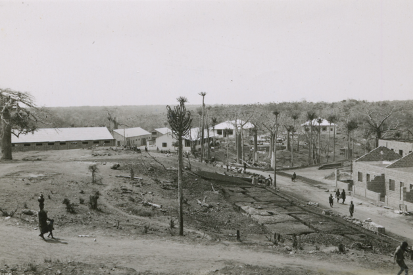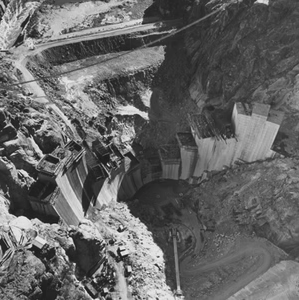MABUBAS DAM, ANGOLA
The Mabubas Dam (1948-1954) – formerly known as Capitão Teófilo Duarte Dam, after the name of the Portuguese Minister of Colonies at the time –, was the first large hydroelectric work promoted by the Portuguese state in Africa. Its construction started in February 1948 at an isolated place near Luanda, Angola.
How to cite
ArchLabour: Architecture Colonialism and Labour (P.I. Ana Vaz Milheiro, ERC-funded 10.3030/101096606, 2024-2028). Mabubas Dam, Angola. Accessed on 3rd December 2025. Available at: https://archlabour.iscte-iul.pt/mabubas-dam-angola/
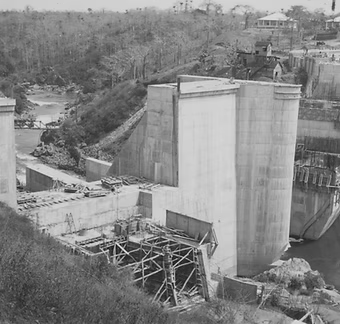
01
Plan & Construction
The project included a gravity dam with a triangular profile and a curved plan: 40 meters high, 282 meters long, and 63,000 m3 of concrete. Portuguese, French and British construction companies were involved in the production, such as Luso-Dana, Neyrpic Portuguese, Obras Metálicas Electro-Soldadas (OMES), Sociedade de Electricidade e Fomento, Construções Especiais, Cimentation Company, The S. Morgan Smith Company and Westinghouse Electric Company. After some failed attempts, the Portuguese state hired the British firm Sir Alexander Gibb & Partners, which re-evaluated the initial plans in 1944, and continued with French and Danish experts.
02
Labour
At its peak, the construction gathered 1,053 workers, described in inspection reports as Indigenous and Europeans. “European” and “assimilated” labourers made up the most qualified group; yet accounting for no more than 15% of the workforce. Unskilled positions were held by the remainder of the workers, including 17% “volunteers”. The movement of people at the yard increased over time, with hundreds of men arriving and leaving every month. Inside Angola, the contingents came from Camacupa, Bié, Alto Quanza, Huambo, Dande, Zombo, Pombo, Ambrizete, Dembos, Cambo, Duque de Bragança and Malange, among others.
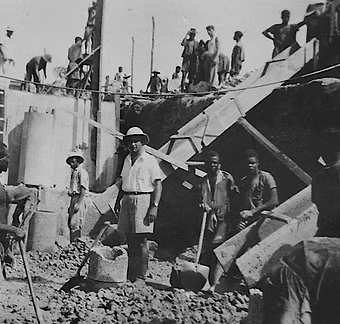
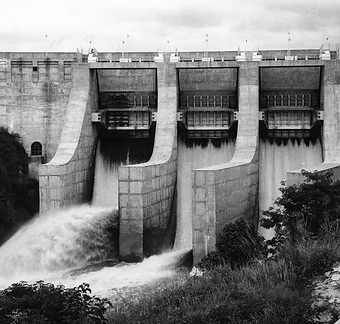
03
Skills & Technologies
Over 30 fields of expertise took part in the construction, from engineers, doctors, nurses, accountants, executive managers, assistants and cooks to construction managers, foremen, toolmakers, bailiffs, warehouse keepers, electricians, motorists, bricklayers, machinists, plumbers, electricians, painters, carpenters, miners, ditchdiggers, quarrymen and servants. Both European and African laborers had to deal with many materials and techniques that combined traditional methods with cutting-edge technology. The simultaneity of systems, materials, and skills was a significant feature of the building site and a decisive factor in the success of the work.
Fieldwork
In progress
Photographs and Drawings
